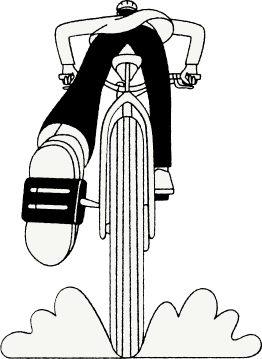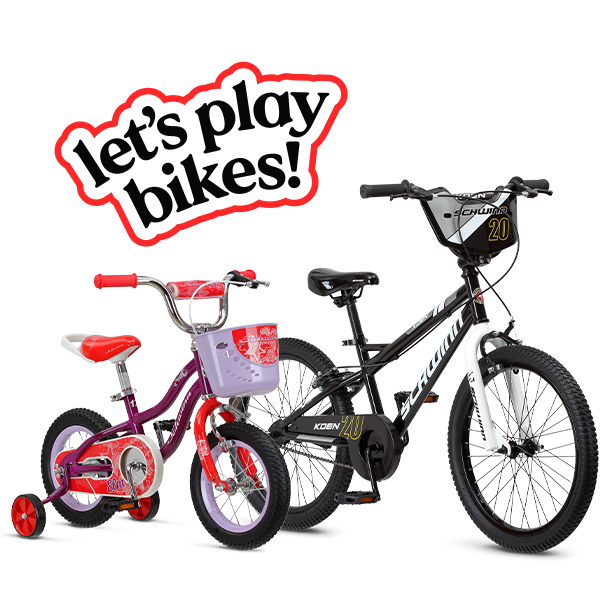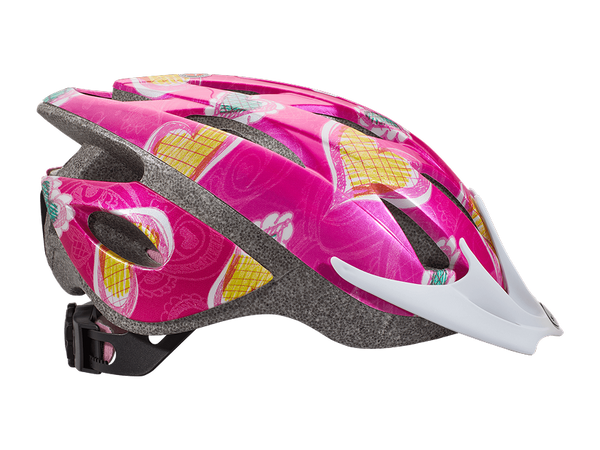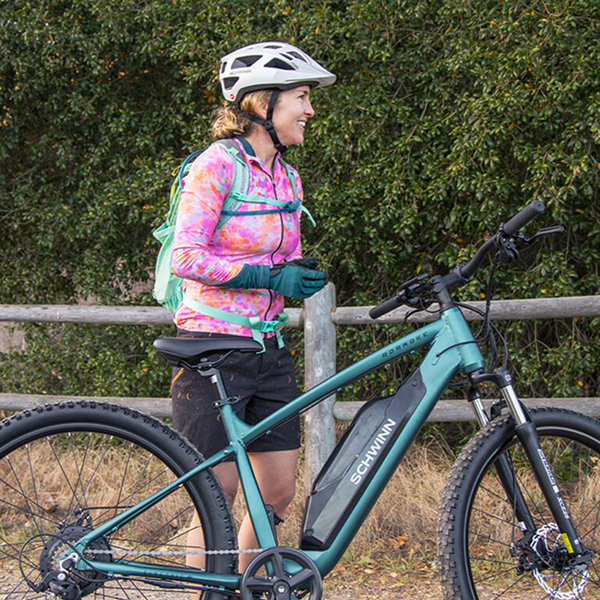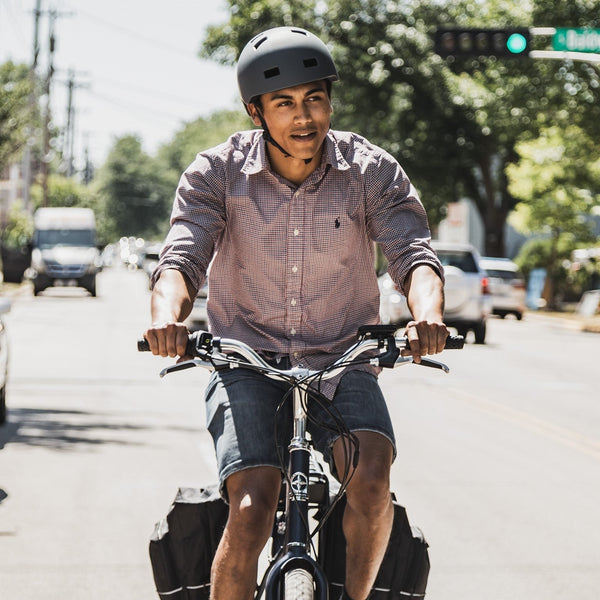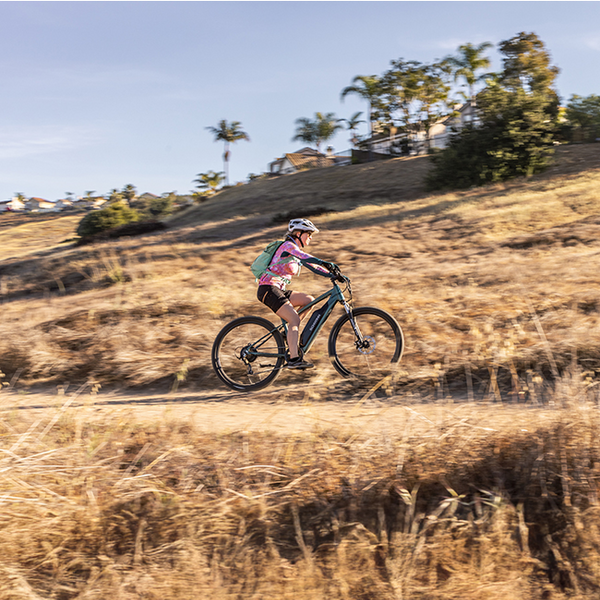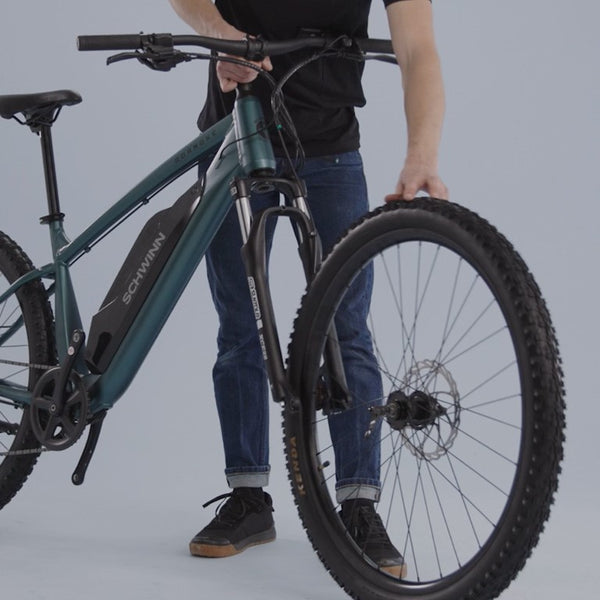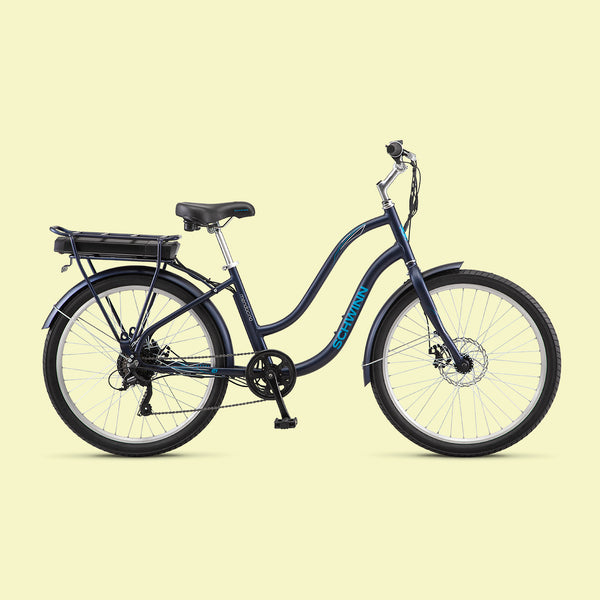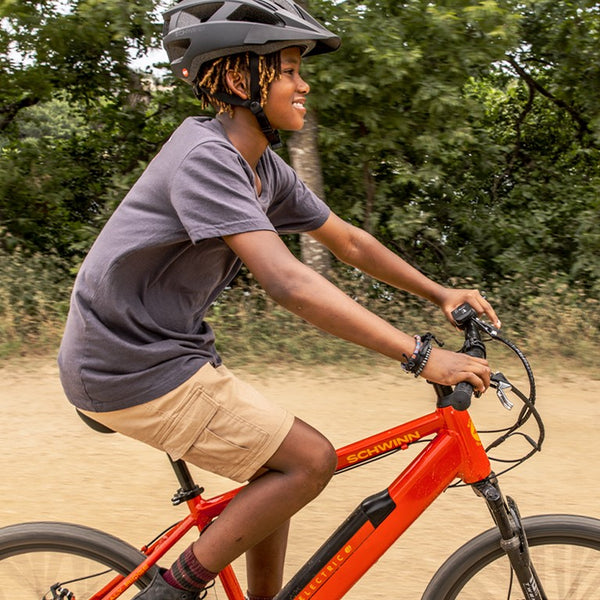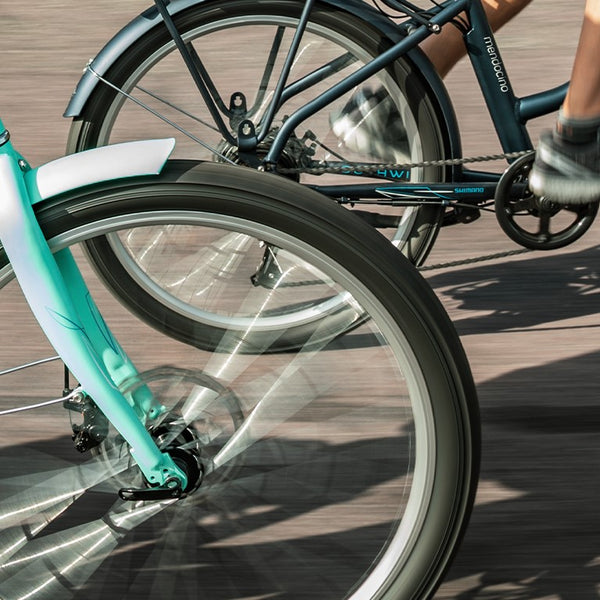At first glance, it seems like a pretty easy question to answer: How do e-bikes work?
The short answer is that e-bikes use electricity to help propel the bike forward. But it's a bit more complicated and – nerd alert! – fascinating than that. With e-bikes still the fastest growing category of the bicycle industry it seems as good a time as any to take a bit of deeper dive into how e-bikes work and why the addition of electricity makes the bike riding experience even more awesome.
We need a dash of history and a primer on a couple key points before we can fully answer the question on how e-bikes work, so let's "charge" right in, shall we?
The Big Three
Regardless of which brand or style of e-bike you ride, there are three main components of an e-bike that differ vastly from what's found on a conventional bicycle. All e-bikes have a motor, a battery, and a method of delivery for the electricity. Those three components are what make an e-bike an e-bike.
Here at Schwinn, our e-bikes generally all use the same style of motor, battery, and delivery of electrical assistance. There are some differences, depending on the model, but there's a lot of commonality. Let's take a closer look at each of those three components with the help of Chuck McFarland, a senior product manager on our e-mobility team.
The Oomph: E-Bike Motors
All of Schwinn's e-bikes use a 250-watt brushless rear hub motor that's located on the back wheel. A brushless motor uses magnets to create a rotating magnetic field that cause it to spin. These motors requires little to no maintenance and the end result is they end up adding power to, and propelling, the back wheel.
In simple terms, a hub motor collects the electricity that comes from the battery and converts that electricity into power that moves the rear wheel of the bike forward.

"When you ride a bike with a rear hub drive you get the sensation of being pushed," Chuck said. "It feels like there's a strong tailwind at your back."
The brushless hub motors have series of magnets inside them that act as sensors to gauge how often the pedals are turned over. That helps the motor determine how much energy to use (or how hard to push) based on what the level of assist the rider wants to add to their ride.
Hub motors are commonly used by a whole host of e-bike manufacturers. One reason, said Chuck, is they make e-bikes affordable and accessible to most people and don't require special upkeep.
The Juice: E-Bike Batteries
When e-bikes burst upon the scene in the 1990s, they were limited by heavy and bulky lead-acid batteries. Technological advancements to rechargeable lithium-ion batteries came in the mid to late 1990s and really spurred the e-bike movement across the entire bicycling industry.

Lithium-ion batteries are light, affordable, and easy to recharge. They are also readily available in several wattages. At Schwinn, our smaller (less wattage) batteries provide up to 20 miles per charge while our largest batteries (more wattage) can deliver up to 80 miles between charges.
Chuck said riders should think of the battery as a gas tank in a motor vehicle. Larger capacity batteries that provide more watt hours don't make the bike any faster, they just allow them to go farther – just like a car with a larger gas tank can travel farther than the same car with a small tank. All Schwinn bikes are classified as "Class 2 e-bikes," meaning they are legal to ride just about any place any conventional bike is allowed, have a maximum speed of 20 mph, and are throttle assisted. The capacity of the battery they use doesn't change that.
On most of Schwinn's bikes, the battery is located on the down tube of the bike frame, but you may see some where the battery is mounted above the rear tire on a rack.
The Brain: E-Bike Displays
Every Schwinn e-bike has a display mounted on the handlebar that allows the rider to deliver electricity from the battery to the hub motor in two ways: through "pedal assist" or a "throttle."

Pedal assist is exactly what it sounds like. The rider can control how much extra power is required to supplement their own pedaling. Adding just a bit of power makes pedaling a little bit easy. Adding a lot of power makes pedaling a lot easier. You might want to maximize the power that's assisting your pedaling, for instance, if you're climbing a hill.
"The control is the brain," said Chuck. "You can choose your level of assist, or you can use full power and use the throttle. The throttle will override the pedaling."
Think of the throttle like a gas pedal. The more you use it, the more electricity you're taking from the battery.
And Now You Know
So, as you can see, the answer to the question "how do e-bikes work?" is a little more complex than the simplified answer what we started with. Let's summarize it this way: An e-bike rider controls the amount of electricity produced from a lithium-ion battery delivered to a hub motor that uses that energy to move the bike forward.
At least for now, that is. As technological advances come about, it likely means there will be changes coming to e-bikes.
"Once you ride an e-bike, you really see the benefits of it," Chuck said. "With that, and the level of interest in e-bikes, there's new technology coming that will likely have an impact."
